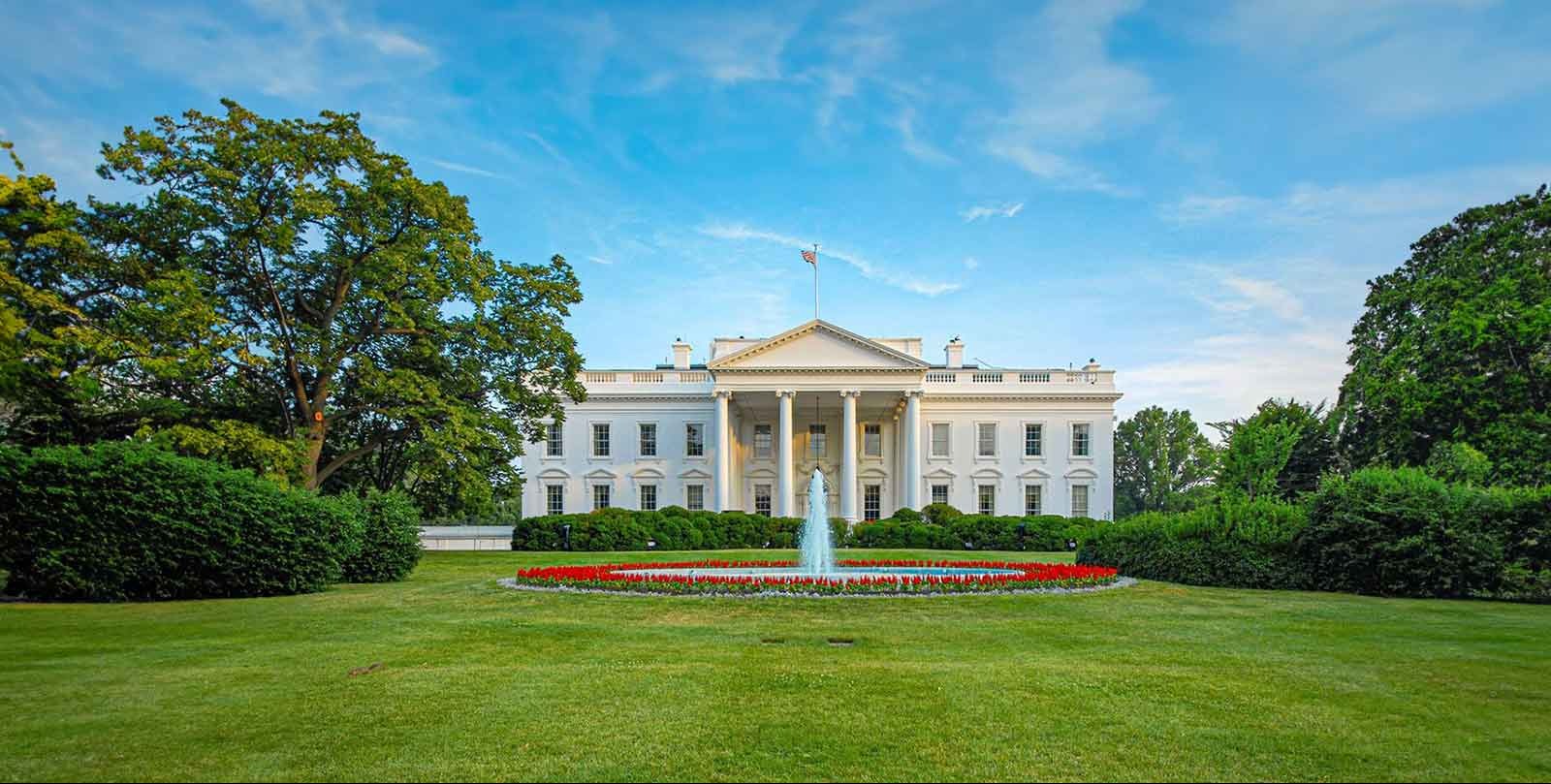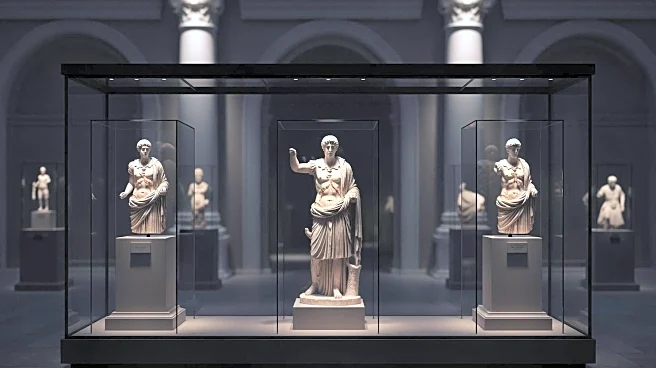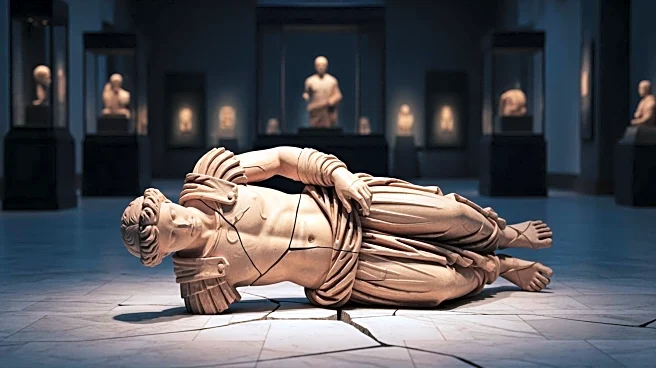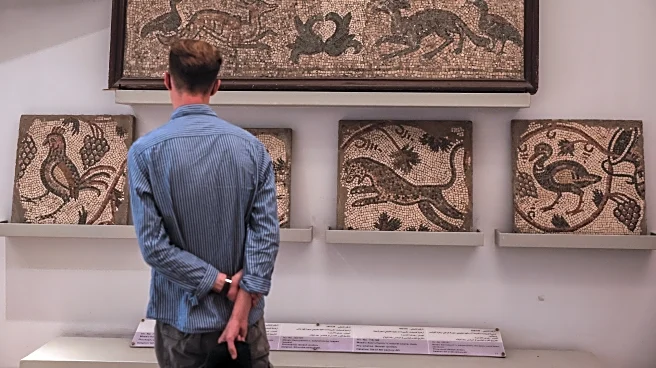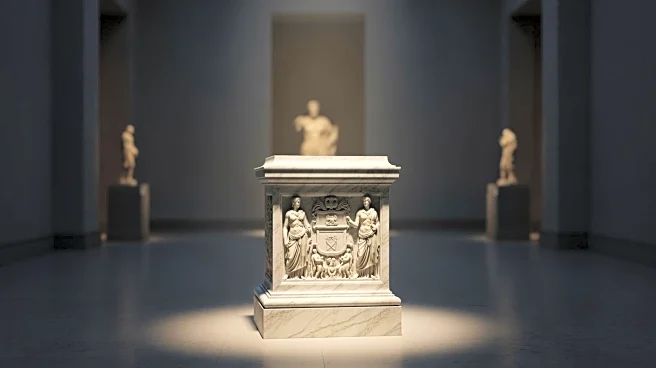What's Happening?
Several Roman-era statues have been stolen from Syria's National Museum in Damascus, marking a significant loss to the country's cultural heritage. The theft was discovered early Monday when museum staff found a door broken from the inside. An official
from the Syrian Ministry of Culture, speaking anonymously, confirmed the stolen artifacts are among the oldest and most valuable in the museum's collection. This incident represents the largest single loss of antiquities since President Bashar al-Assad was overthrown by rebels last year. Brig. Gen. Osama Mohammad Khair Atkeh, head of Damascus's internal security forces, announced that authorities have initiated an investigation into the theft, which targeted several archaeological statues and rare collectibles. Specialist teams are working to locate the perpetrators and recover the missing artifacts, while museum guards are being questioned.
Why It's Important?
The theft of these Roman-era artifacts is a significant blow to Syria's cultural heritage, which has already suffered extensive damage during the country's 13-year civil war. The National Museum of Damascus, founded in 1919, is Syria's oldest and largest museum, housing treasures that span from prehistory to the Islamic era. The loss of these artifacts not only diminishes the museum's collection but also impacts the preservation of historical knowledge and cultural identity. The theft underscores ongoing challenges in protecting cultural sites in conflict zones, where looting and destruction are prevalent. The incident may also affect international efforts to safeguard and restore Syria's archaeological heritage, which has been a focus of global cultural preservation initiatives.
What's Next?
Authorities in Damascus are actively investigating the theft, with specialist teams working to identify and apprehend the perpetrators. The investigation will likely involve questioning museum staff and reviewing security protocols to prevent future incidents. International organizations focused on cultural heritage preservation may offer support or expertise in recovering the stolen artifacts. The incident could prompt increased security measures at cultural sites across Syria, as well as renewed calls for international cooperation in protecting endangered cultural heritage in conflict zones.
Beyond the Headlines
The theft highlights the ethical and legal challenges in the art and antiquities market, where stolen artifacts can be trafficked and sold. It raises questions about the responsibility of museums and governments to protect cultural heritage, especially in regions affected by conflict. The incident may lead to discussions on improving international laws and agreements to prevent the illegal trade of cultural artifacts and ensure their safe return to their countries of origin.


